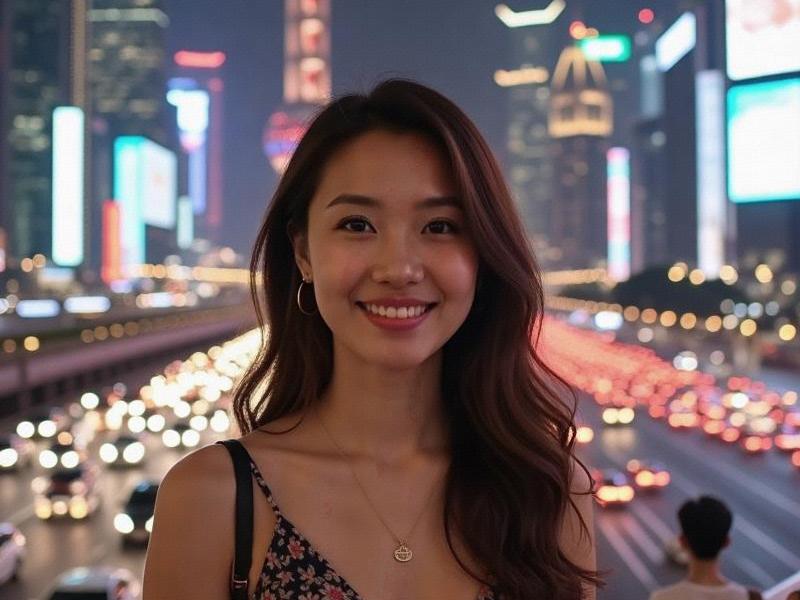The Shanghai Mystique: Decoding the Allure of China's Most Stylish Women
⏱ 2025-06-30 00:13 🔖 阿拉爱上海
📢0℃

Chapter 1: Historical Foundations
- The qipao revolution of 1920s Shanghai and its contemporary reinterpretations
- Analysis of "Haipai" (Shanghai-style) femininity through museum archives
- How 1940s screen sirens established enduring beauty standards
- The surprising continuity in hairstyling techniques across generations
Chapter 2: The Education Advantage
- Shanghai's female university enrollment rate reaches 89% in 2025
阿拉爱上海 - Specialized programs cultivating "Renaissance Women" at Fudan University
- Multilingualism as social currency: Average 2.3 foreign languages mastered
- The decline of "trophy wife" culture among post-90s generations
Chapter 3: Workplace Revolution
- Women occupying 58% of senior fintech positions in Lujiazui
- Case study: Female-led design firms transforming urban architecture
爱上海419论坛 - The "4.0 Entrepreneurship" model balancing profit and social impact
- How flexible workspaces accommodate feminine leadership styles
Chapter 4: Aesthetic Innovation
- Digital qipao designers merging tradition with augmented reality
- The rise of "conscious cosmetics" with Chinese herbal formulations
- Smart jewelry collections tracking wellness metrics
上海龙凤阿拉后花园 - Local fashion bloggers outperforming Western influencers
Chapter 5: Global Cultural Ambassadors
- Shanghai women dominating international creative competitions
- The "New Silk Road" cultural exchange programs
- How expat women adopt Shanghai beauty rituals
- The emerging "Shanghai Chic" trend in European fashion capitals
"Shanghai women have mastered cultural code-switching," observes anthropologist Dr. Lillian Wu. "They move effortlessly between tea ceremony and blockchain conference, between silk atelier and AI lab, creating a new template for global femininity."
Shanghai's Beauty: A Blend of Tradition and ModernityQuantum Bund: Shanghai's Chrono-Urban Matrix Rewriting Civilization's Source Code"The Yangtze Delta Experiment: How Shanghai and Its Satellite Cities Are Rewriting Urbanization Rules"The Evolution of Shanghai's Nightlife: How Entertainment Venues Are Redefining Urban LeisureShanghai's Nightlife Revolution: How Entertainment Clubs Are Shaping Urban Culture in 2025Neon Cheongsams: How Shanghai's Women Are Rewriting the Rules of Asian FemininityShanghai Beauties: A Journey Through the City's Elegant CharmShanghai and Its Surrounding Areas Sightseeing GuideShanghai and Its Satellite Cities: The Making of a 21st Century MegalopolisShanghai Entertainment Hotspots: A Vibrant Melting Pot of Culture and Fun
Midnight in Shanghai: How China's Glittering Metropolis Redefines Nightlife LuxuryShanghai's Sphere of Influence: How the Megacity is Reshaping Eastern ChinaThe Yangtze Delta Megaregion: How Shanghai and Its Neighbors Are Redefining Urban EconomicsThe Velvet Rope Economy: Inside Shanghai's Exclusive Entertainment Club SceneGilded Playgrounds: How Shanghai's Elite Entertainment Clubs Are Redefining Urban NightlifeThe Shanghai Nexus: How China's Financial Capital is Reshaping the Yangtze River Delta MegaregionShanghai 2025: The Silicon Valley of the East Reinvents Urban LivingShanghai After Dark: The Evolution of Elite Entertainment Clubs in China's Cosmopolitan CapitalShanghai's Daughters: How the City's Women Are Redefining Chinese FemininityShanghai 2025: Where Futurism Meets Heritage in China's Global Metropolis

